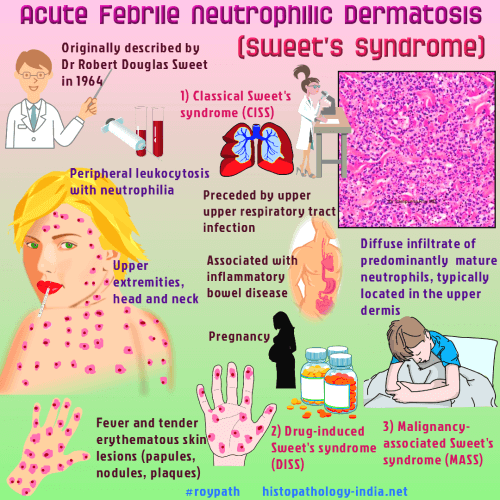|

Custom Search
|
|
Dermpath-India Pathology of Acute Febrile Neutrophilic Dermatosis (Sweet's Syndrome) Dr Sampurna Roy MD 2023
|
 |

| Sweet's
syndrome was first described as "acute febrile neutrophilic dermatosis" by
Dr. Robert Douglas Sweet in 1964.
Classical Sweet's syndrome is characterized by high fever, elevated neutrophil count, tender erythematous skin lesions (papules, nodules, and plaques), and a diffuse infiltrate consisting predominantly of mature neutrophils typically located in the upper dermis. These are usually located on the face, extremities and rarely on the trunk. Sweet's syndrome may be associated with malignancy. Cases have been reported with leukaemia, specially acute myeloid leukaemia and testicular tumour. Drug-induced Sweet's syndrome was described in 1986. The lesion was caused by trimethoprim-sulfamethoxazole.
Reference: Sweet's syndrome--a comprehensive review of an acute febrile neutrophilic dermatosis.
|
|
|
 |
Visit:- Infectious Disease Online
 Prof (Dr) Haradhan Roy MD (AIIMS) (1928-2022) (R) Director-Professor and Head of the Dept of Pathology, Calcutta National Medical College, Calcutta University India |

|
Copyright ©
2002-2023 histopathology-india.net